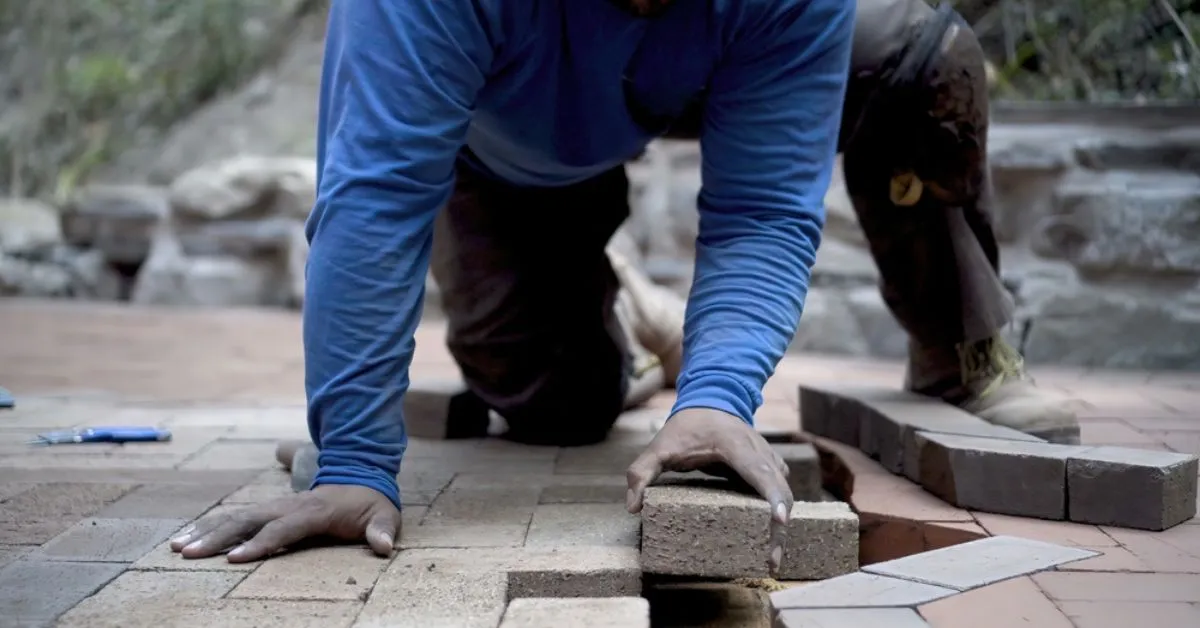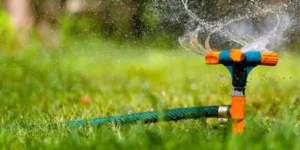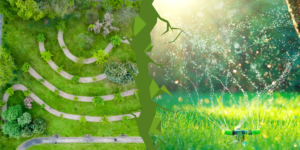
Are you familiar with “Hardscaping” but do not know what it means? If you’re not a landscaping fan, you’ve likely never heard of hardscaping. However, that’s fine. We’ve got you covered! Then, what exactly is hardscaping?
What is Hardscaping?
The simplest definition is incorporating landscaping elements that are not living to create a more natural landscape. Hardscaping is among the two principal practices employed to create landscaping.
In essence, hardscaping is the application of solid, non-living elements in outdoor spaces such as parks, gardens, yards, walkways, or other common areas.
In other words, non-living materials comprise things like stone or bricks, wood or concrete. Every solid construction in the outdoor space that isn’t a plant or artificial is termed hardscape. More complex elements usually define the purpose of an area. A dirt path leads guests through various zones of a garden or park.
By incorporating nearly every ornamental or functional structure into a landscape, hardscaping adds the appearance and utility for outdoor areas. Additionally, adding hardscapes to your landscape can enhance the value of your space, cut down on maintenance, and improve your home’s visual appeal.
Why is Hardscaping Important?
Many homeowners are interested in having an appealing garden that brings pleasure in its aesthetics. But, to enhance the appearance and function of an outdoor space, you must pay attention to the importance of using hardscaping landscaping elements.
This is opposed to softscaping, composed of natural elements that are part of the landscape, such as trees, plants, and paved spaces. Materials like raw concrete, stone, and bricks are typically used in hardscaping.
Popular elements include driveways, patios, pathways, and areas that surround swimming pools. It can also be used for purposeful purposes, comprising outdoor structures such as wall retaining.
In addition to aesthetics, hardscaping provides tangible benefits. For instance, paths guard the lawn from pedestrian traffic. Retention walls are crucial for controlling sloped terrains. In addition, hardscaping can provide opportunities to create unique landscaping, as pavements can be used to support structures and prevent soil erosion.
Understanding that hardscaping design requires considerable effort and takes time, similar to conventional landscapes, is crucial. The essence of a well-designed garden blends softscaping and hardscaping to create an elegant and seamless appearance.
What Is the Difference Between Hardscaping and Softscaping?
Although hardscaping components like stone or wood are not living materials, softscape elements such as flowers and plants are living things. Softscapes and hardscapes have their purpose and perform well when combined.
For example, there’s a good chance that you would only like a park with grass or trees. However, it’s unlikely that you would appreciate it without paths and playgrounds or any other artificial components either.
So, both components depend upon each other to function correctly. Hardscapes provide structure and stability to a landscape, but only softscapes can make landscapes look inviting and human/nature friendly.
It is the blend of both hardscapes and softscapes that makes the perfect landscaping!
What Is the Difference Between Hardscaping and Landscaping?
Hardscaping and landscaping can be used interchangeably, referring to two different aspects.
Landscaping makes a particular piece of land attractive by altering the style and adding functional aspects, including living features such as trees and plants. Hence, landscaping includes both hardscaping and softscaping.. Sometimes, it even includes waterscaping.
Benefits of Hardscaping
Hardscaping is a crucial aspect of the design of landscapes. It provides various benefits to enhance outdoor areas’ aesthetics, functionality, and general appeal.
Low Maintenance
Contrary to landscapes and lawns, which require regular home maintenance, hardscaping elements require only minimal maintenance.
It is an excellent option for homeowners and commercial property owners with hectic schedules as it reduces the time and energy needed to keep the landscaping.
Sustainable
This lets you increase the appeal of your backyard while not causing harm to the plants and creatures that inhabit the region.
Specific hardscape components can help local wildlife by providing them secure areas to reproduce and live.
Excellent Source of Drainage
The hardscaping features, like permeable gravel beds and pavers, will aid in drainage and prevent water accumulation.
A proper drainage system can keep the landscape from flooding, erosion, and water damage. It also keeps the natural landscape healthy and secures the structures surrounding it.
Conserve Water
Removing excess water is crucial after heavy rain, but conserving water is just as important during a dry period. Techniques for hardscaping will allow the storage and capture of rainwater before using it to create irrigation.
Increase Property Value
An attractive and well-maintained landscape will significantly enhance the value of an investment home. It is essential to add attractive features like a patio made of stone or a well-groomed front door to improve curb appeal and a property’s overall appeal.
Rocks
Stones, rocks, and pebbles can be helpful in various projects within and surrounding landscapes. In addition to being outstanding decorative elements, they are used to prevent erosion and ensure your lawn’s integrity.
Crushed Shells
Crushed shells give walkways and driveways an inviting, beachy feel. They create an excellent natural surface in a corner between wood or stone to stop the shells from spilling onto gardens. There is only one downside: they are very sharp and can be painful for those who are used to walking barefoot.
Stepping Stones
The appearance of a home is more welcoming when there’s the possibility of directing people through the garden. The stepping stones look nice and help people walk safely in the yard without damaging the plants and other soft elements.
Bricks
Masonry is a stunning and helpful way to include the look of a hardscape element in your property. Bricks can be an excellent choice for walkways and patios, and they blend perfectly with the design of most homes. Many homeowners love the striking contrast of red bricks and the green shade of all softscape elements.
Final Thoughts
Hardscaping incorporates non-living components like concrete, stone, and bricks into the landscaping to add structure and dimensions. It complements soft landscaping, which includes living elements such as trees.
Combining the two is vital for creating a harmonious and appealing outdoor area. Hardscaping offers aesthetics and practical benefits such as easy maintenance, sustainability, efficient drainage, water conservation, and a higher value for property.
Many materials, including stone, crushed shells, steps stones, and bricks, can contribute to the aesthetic and practical aspects of landscaping.
Mahnoor Murtaza is the Content Writer, who has beed writing content for the HALSCO website since 2022. She’s been involved in content writing since 2022 and specializes in English Literature & linguistics. She has worked with us on several projects to create web content and blogs/articles.




